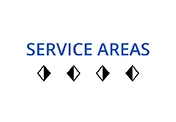What Are The Advantages of Longer Length Siding?
You see vinyl siding everywhere. In fact, it’s capture almost a third of the U.S siding market share for new homes. Vinyl siding is as popular for its variety of colors and styles as it is for its budget friendly cost. Not to mention it never needs stripping and painting.
But perhaps you’ve never thought about the advantages of different lengths of vinyl siding before? Well, you’re in luck. Learning something new every day keeps you young.
Why Vinyl Siding Comes in a Variety of Lengths
Like most exterior treatments, vinyl siding has the primary job of shielding the frame of the house from the elements. To that end, pieces of vinyl are arranged just like asphalt shingles would be, in a staggered pattern.
Now, if you’re just driving down the street, you probably wouldn’t notice. But the fact is, you can see a faint seam where the sheets of vinyl butt up against each other. And some people don’t like how that looks.
Depending on the length of the run of the house, you might see a seam every few feet. So that’s why, for the nicer quality vinyl siding, the manufacturers make the extra-long lengths. They can’t get rid of all the seams, but with some judicious planning and attention to detail by the installers, they can get rid of some of them. And the fewer there are, the less likely they are to be noticeable.
Do Longer Lengths of Siding Really Make a Difference?
How much of a difference does it really make? Glad you asked. A standard vinyl panel is 12 feet long. On a 20 foot long wall, going up to a 16 foot panel reduces the number of seams by 35%, and going up to a 20 foot panel, of course, gets rid of the seams altogether.
The seams ruin the illusion that the house isn’t sided with cedar or shiplap. Of course, no one who’s ever had to maintain shiplap wants a wooden house, but most people still kind of like how it looks. So getting rid of the seams helps maintain that illusion.
Longer-length siding comes in 16, 20, and 25 foot lengths. This means that on a ranch-style house, you’re still going to have some lines, but you can just about get away without them on most other styles of homes.
Although you’re paying a little more to get the longer lengths, you’re also saving money on the installation. No fiddly joins means that everything goes together faster. Add the aesthetic benefits, and there’s really no reason not to use longer lengths of vinyl siding.











